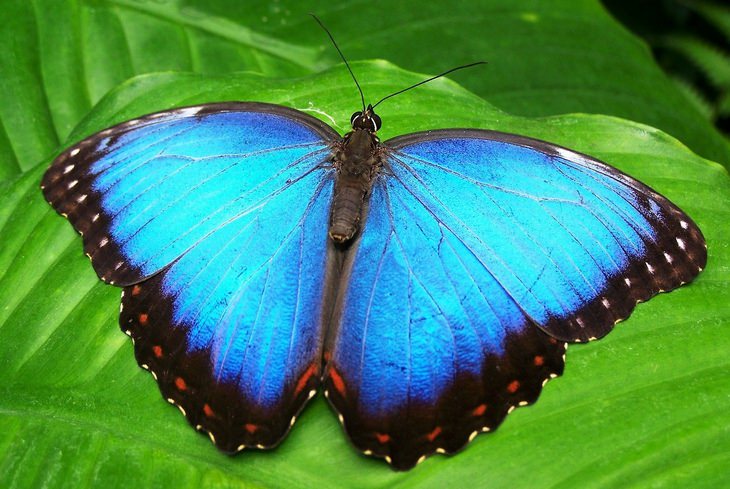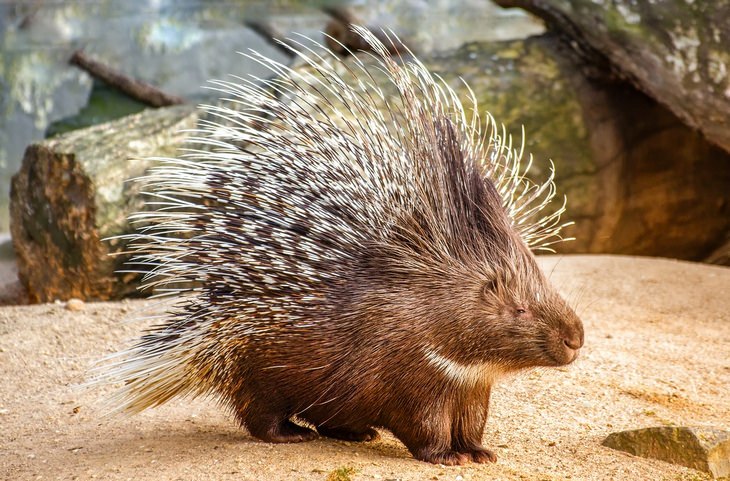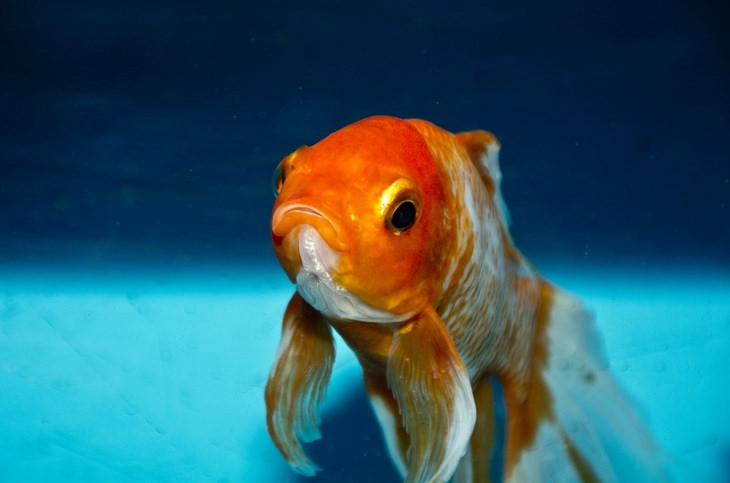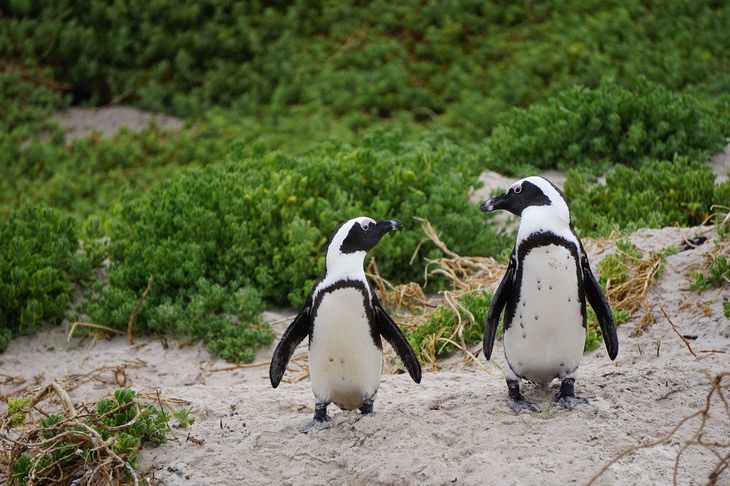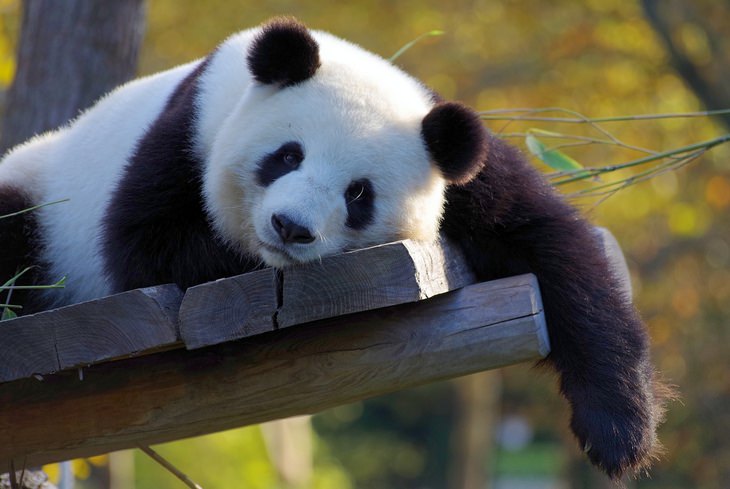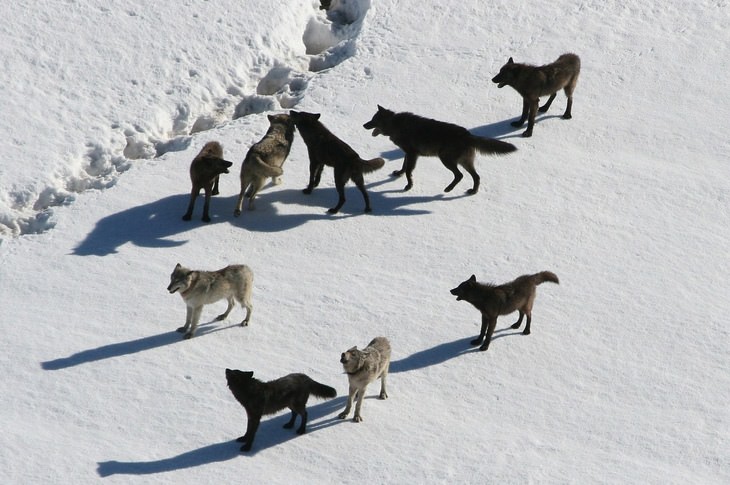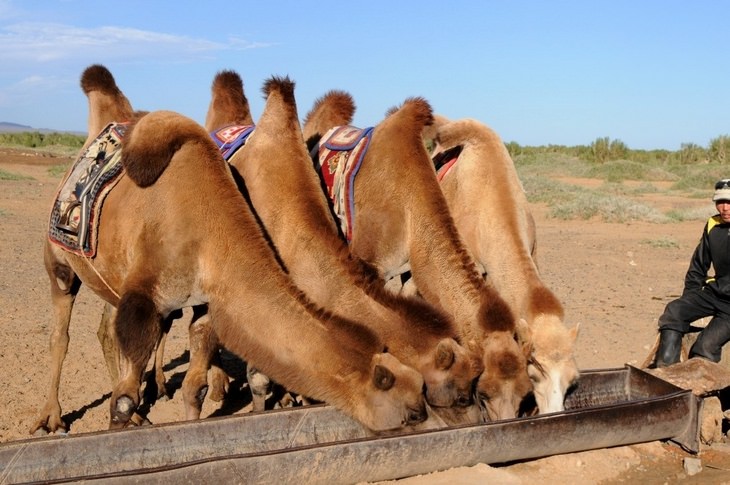1. Butterflies Live Only One Day
It’s a beautifully poetic image: caterpillars spend weeks feeding, growing and transforming, and then they reemerge into the world as beautiful butterflies, only to die at the end of the day. Except it’s completely false. The grain of truth in the myth is that most butterflies are rather short-lived, dying anywhere between a week and a month after reaching adulthood, but some species can survive as adults for months, with some extreme cases reaching a full year.
2. Porcupines Can Shoot Their Quills
Porcupines are one of either two distantly related species of rodents that have a defensive mechanism in common: long keratin-hardened hairs that are so tough and sharp that they can impale predators. For many years, humans thought that porcupines can actually use the quills as projectiles by shaking their coat, but that is false. Coat-shaking behavior is a warning meant to intimidate predators, not an attack. And while some quills may dislodge during shaking, they just fall off, rather than fly like an arrow. The way porcupines attack is by running quills-first into the predator.
3. Chickens Can’t Fly
For many people, the first image that comes to mind when one speaks of flightless birds is the chicken, but while you’ll never see a penguin or ostrich mid-air with wings outstretched, chickens are by no means strangers to flight. All Galliformes- a family that includes chickens, turkeys, pheasants, peacocks, and junglefowl- can fly, but because of their small wings and overly-developed flying muscles, they can only fly short distances. Farm-grown hens typically have even poorer flying capabilities, because they’ve been selectively bred to have even bulkier breast muscles (which humans find delicious). But just because they’re bad at flying doesn’t mean they can’t fly.
4. Fish Forget Everything After 3 Seconds
It goes like this: you’re looking at a goldfish swimming in circles within the tight confines of the aquarium. You wonder aloud whether it gets bored, and someone tells you that the opposite is true; the fish is in a state of perpetual bewilderment because it has a 3-second memory span. However, this particular myth was debunked a full decade ago, when a team of Israeli scientists were not only able to train fish to respond to a particular sound but proved the fish can remember the sound after five months in the wild.
5. Penguins Mate for Life
It is commonly believed that penguins form deep romantic bonds with a single mate which they stick by faithfully for the rest of their lives, and many zoos boast such celebrity power couples. But while most penguin species are technically monogamous, it would be misguided to equate their mating behavior with that of humans.
For one, emperor penguins, the most famous of penguins, are serially monogamous, meaning they breed with an exclusive mate during a single mating season, but mate with another in the following season. Additionally, both Humboldt and Adelie penguins have been observed cheating on their partners, and some penguins actually divorce.
6. Pandas Are Bad at Sex
Pandas are so famously inept at copulation. One male tried to breed with a female’s ear, and some conservation centers have taken to showing males panda pornography in order to guide them through the process because they appear completely disinterested or clueless about the prospect of mating. The problem is, those are captive pandas we’re talking about. Pandas in the wild behave in radically different ways. For one, male libido appears to work just fine in the wild, with one zoologist reporting a male copulating with a female 48 times over a period of 150 minutes.
7. Wolves Find Each Other Out to Form Packs
We imagine wolf packs to be similar to primitive human societal structures such as tribes, formed of various people who aren’t necessarily related. The truth is that in the case of the gray wolf, “pack” is just another name for the family. The alphas aren’t simply the most dominant male and female, they’re the actual biological parents of all of the other pack members. Wolves and other related pack canines may form artificial packs with wolves that aren't family in captivity, but in such cases, they're merely applying what they know to an unnatural environment.
8. Camels Store Water in Their Humps
Camels are famously resilient beasts that can survive for weeks without a drop of water to drink, leading some to believe they store water in their humps for later use. Camels do have a rather ingenious mechanism to conserve water- within especially elastic red blood cells. What is stored in the humps, rather, is fat. This is important because food can be sparse in the desert and the fatty deposits can be used for sustenance, and also because its particular location on the back allows the camel to better regulate its body temperature during the blazing hot days and freezing nights.

